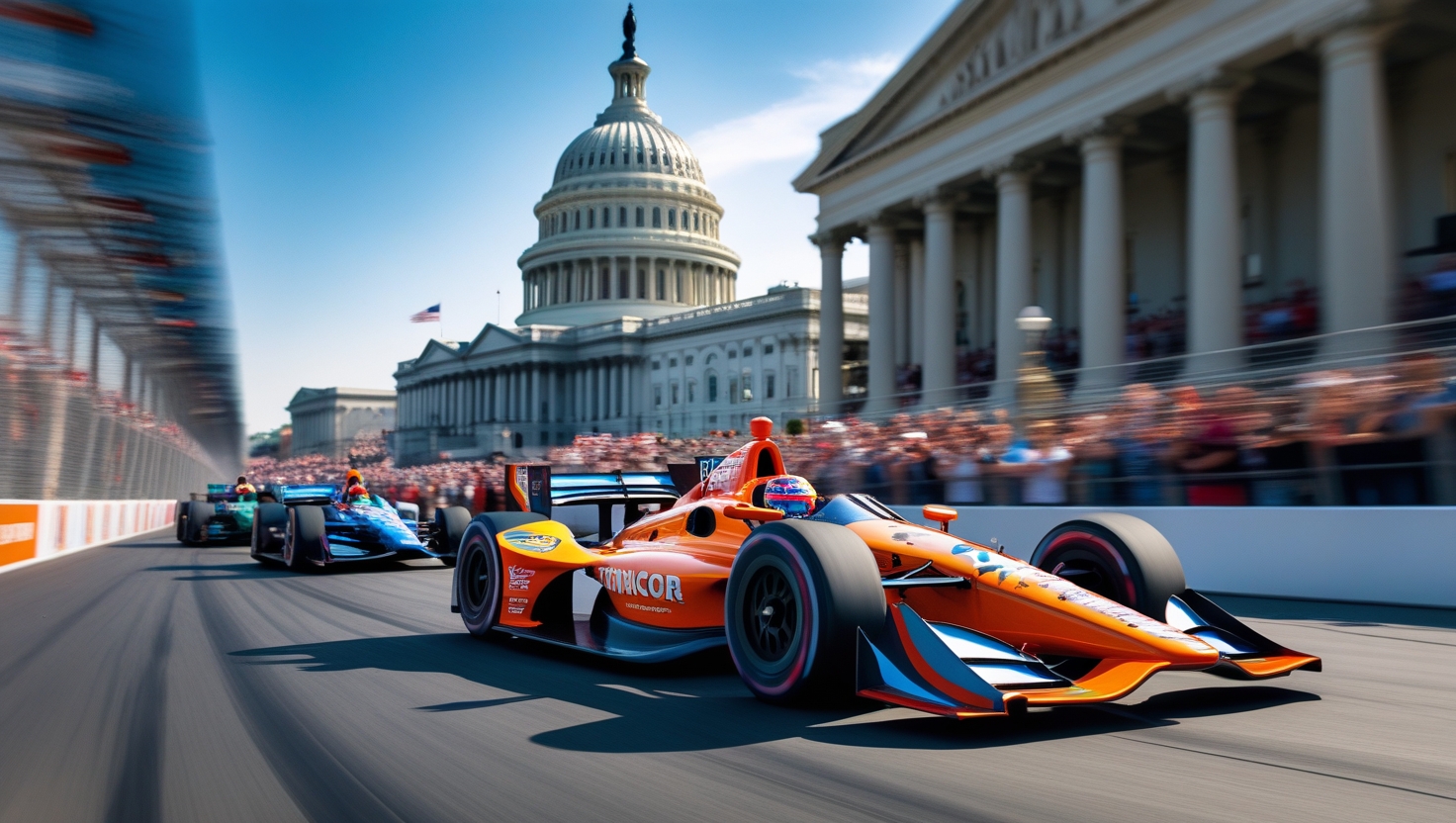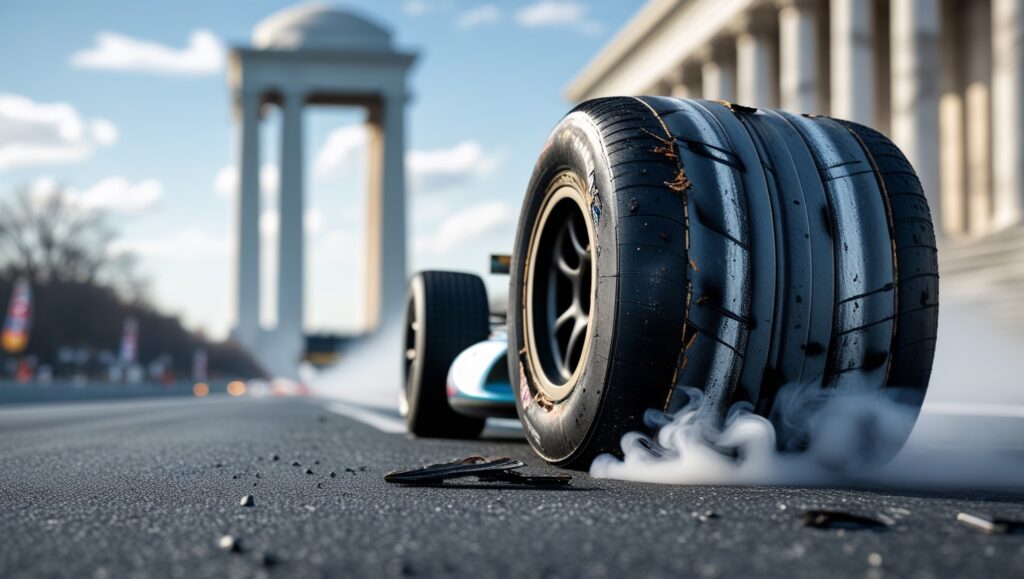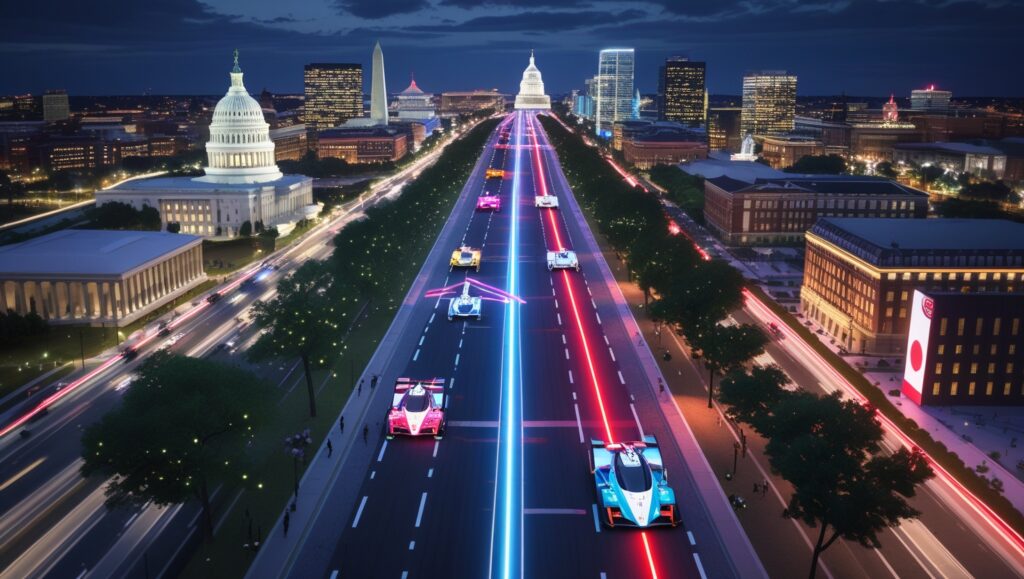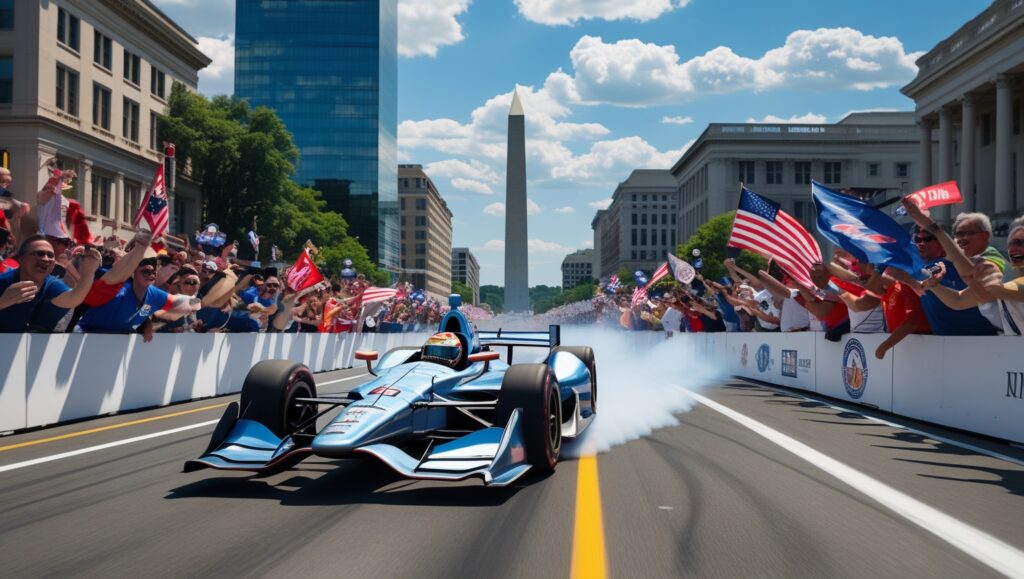Physical Address
304 North Cardinal St.
Dorchester Center, MA 02124
Physical Address
304 North Cardinal St.
Dorchester Center, MA 02124

Imagine the roar of high-performance engines echoing off the marble monuments of the nation’s capital. The smell of burning rubber mingling with cherry blossoms. The thrill of speed unfolding on streets usually reserved for diplomats and tourists. That vision may soon become reality as IndyCar explores Washington D.C. street race possibilities, signaling a bold new chapter in American motorsports.
This isn’t just another race proposal it’s a potential cultural moment. With the backdrop of Capitol Hill and the Lincoln Memorial, IndyCar’s move could redefine urban racing in the U.S., blending adrenaline with Americana in a way no other event has done before.

When we say IndyCar explores Washington D.C. street race, we’re talking about the series actively evaluating the feasibility of hosting a race on the city’s public roads. According to reports, the concept is still in its early stages, with no confirmed route or date. However, the idea is gaining traction as IndyCar looks to expand its footprint and engage new audiences.
This potential race would join a growing list of street circuits in the IndyCar calendar, which already includes cities like Detroit and Long Beach. Unlike traditional racetracks, street races are held on temporarily closed-off public roads, offering a unique challenge for drivers and a visually stunning experience for fans.
Washington D.C. isn’t new to motorsports. The city hosted the Cadillac Grand Prix of Washington D.C. in 2002, an American Le Mans Series event held around RFK Stadium. Though short-lived, it proved that the capital could accommodate high speed racing.
Now, with the United States preparing to celebrate its 250th anniversary in 2026, the timing couldn’t be more symbolic. A street race in D.C. would not only honor the country’s legacy but also showcase its modern spirit of innovation and competition.

IndyCar’s interest in Washington D.C. is part of a broader strategy to diversify its race locations and attract a wider fan base. With Fox Corp. recently acquiring a 33% stake in Penske Entertainment—the owner of IndyCar—the series is poised for expansion. New races are already planned in Arlington, Texas, and Mexico City, indicating a clear push toward high-profile, globally resonant venues.
D.C. offers a unique blend of political prestige, urban infrastructure, and cultural relevance. A race here wouldn’t just be about speed it would be a statement.
The pros are compelling. A race in D.C. would:
But there are challenges too. Street races require extensive planning, road closures, and coordination with city officials. Security concerns in a politically sensitive area like D.C. could complicate logistics. And there’s always the risk of public pushback from residents wary of noise and disruption.

Street races are among the most visually captivating events in motorsports. They turn familiar cityscapes into high speed battlegrounds. Here are a few fascinating tidbits:
If IndyCar explores Washington D.C. street race successfully, it could rival these iconic events in both spectacle and significance.
Cities like Singapore, Baku, and Miami have successfully hosted street races, blending motorsports with urban culture. Singapore’s night race is a marvel of engineering and logistics, while Miami’s Grand Prix integrates entertainment and racing in a festival-like atmosphere.
Washington D.C. could adopt similar models, incorporating fan zones, concerts, and cultural exhibits to create a holistic experience. The city’s rich history and architecture would provide a stunning backdrop, making the race not just a sporting event but a celebration of American identity.
Q: Is the Washington D.C. street race officially confirmed?
A: No, the race is still in the exploratory phase. IndyCar has not finalized any plans or routes.
Q: What streets might be used for the race?
A: Specific locations haven’t been disclosed, but possibilities include areas near RFK Stadium or routes that showcase iconic landmarks.
Q: When could the race take place?
A: The earliest possible date would be next season, but it may align with the U.S. 250th anniversary celebrations in 2026.
Q: How would this race affect local traffic and residents?
A: Like all street races, it would require temporary road closures and rerouting. City officials would need to work closely with organizers to minimize disruption.
Q: What makes this race different from other IndyCar events?
A: Its location in the nation’s capital, combined with the historical and political significance of the setting, makes it uniquely impactful.
As IndyCar explores Washington D.C. street race possibilities, the motorsports world watches with anticipation. This isn’t just about adding another race to the calendar—it’s about redefining what IndyCar can be. A race in the heart of American democracy would symbolize progress, unity, and the thrill of competition.
Whether you’re a die-hard racing fan or a curious newcomer, this potential event promises something extraordinary. Keep your eyes on the road ahead—because if this race happens, it could be one for the history books.
What are your thoughts on IndyCar racing through the streets of D.C.? Would you attend? Share your views in the comments and let’s fuel the conversation.